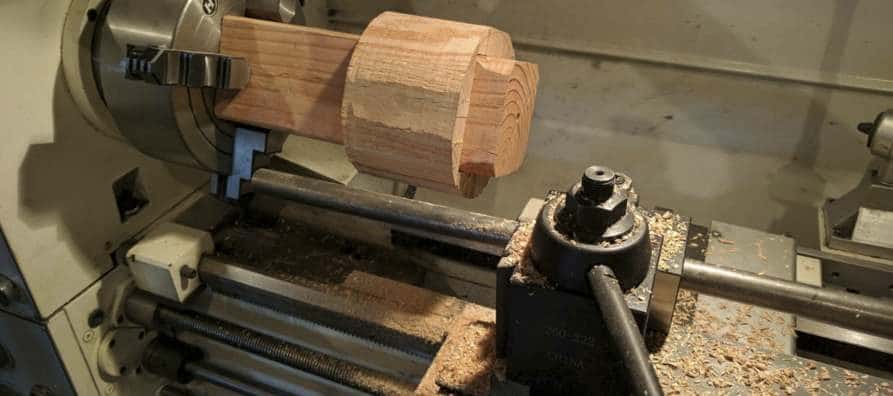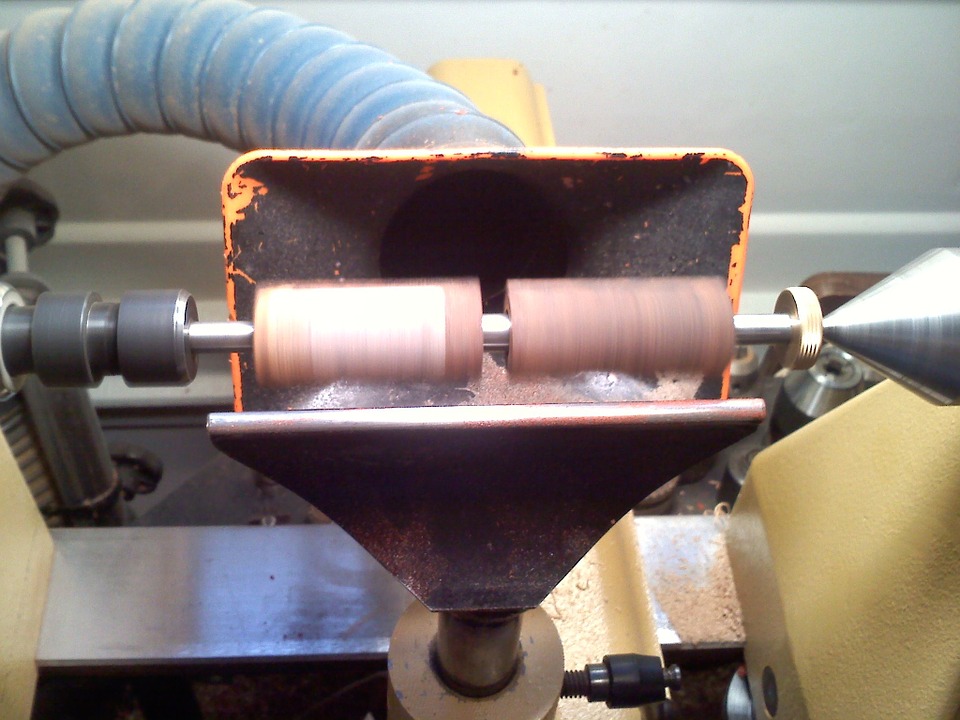Can metal lathes be used for wood? If you’ve ever wondered about this, you’re in the right place! In this article, we’ll explore the fascinating world of metal lathes and their potential for woodworking projects. So, buckle up and get ready to discover the possibilities that await!
You might be thinking, “Wait, aren’t metal lathes designed for working with, well, metal?” And you wouldn’t be wrong! Traditionally, metal lathes are used for turning metal parts and creating precise shapes. But here’s the exciting part: with the right modifications and techniques, metal lathes can indeed be used for woodworking as well!
So, if you’re curious about taking your woodworking skills to the next level or simply want to explore the versatility of metal lathes, keep reading. We’ll delve into the reasons why woodworkers choose to use metal lathes for their projects and provide some valuable insights to get you started. Let’s embark on this creative journey together and unlock the amazing potential of combining metal lathes with wood!

Can Metal Lathes Be Used for Wood?
Metal lathes are versatile machines commonly used in metalworking to shape and form metal objects. They are known for their precision and ability to create intricate designs. However, many people wonder if metal lathes can be used for woodworking as well. In this article, we will explore this question in detail and discuss the possibilities and limitations of using metal lathes for wood projects.
The Basics of Metal Lathes for Woodworking
1. Understanding the Differences Between Metal and Wood
While metal and wood may seem somewhat similar at first glance, they have distinct characteristics that must be taken into account when using a metal lathe for woodworking. Metal is a denser and harder material than wood, which means that the tools and techniques used for metalworking may not be suitable for woodturning. Additionally, wood is more prone to chipping and splintering compared to metal, requiring special care and techniques to achieve smooth finishes.
2. Tooling Considerations
When using a metal lathe for woodturning, it is essential to use appropriate tooling. Metal-cutting tools are not designed for wood and may not perform optimally or may cause damage to the wood. Woodturning tools, on the other hand, are specifically designed to cut and shape wood, providing better control and reducing the risk of splintering. It is crucial to use the right tools, such as gouges, parting tools, and skew chisels, specifically designed for woodturning.
3. Speed Control and Power Requirements
Another crucial factor to consider when using a metal lathe for wood is the speed control and power requirements. Metal lathes are designed to operate at higher speeds to cut through dense metal materials effectively. However, wood requires lower cutting speeds to prevent burning and tearing. Some metal lathes may not offer the necessary speed control for safe and efficient woodturning. It is essential to ensure that the metal lathe has variable speed settings suitable for woodturning projects.
4. Safety Precautions
Woodworking involves its own set of safety considerations, and using a metal lathe for wood requires additional precautions. As wood is more prone to splintering and chipping, it is crucial to wear appropriate personal protective equipment (PPE), such as safety goggles and a face shield, to protect against flying wood particles. Additionally, it is essential to maintain a firm grip on the wood piece and use proper techniques to avoid accidents and injuries.
5. Limitations and Considerations
While it is possible to use a metal lathe for wood, there are certain limitations and considerations to keep in mind. The primary purpose of a metal lathe is to work with metal, and using it for wood projects may not provide the same level of precision and finesse as a lathe specifically designed for woodworking. Woodturning requires different techniques, tools, and speed control. It is important to assess the capabilities of your specific metal lathe and determine if it can meet your woodworking needs adequately.
6. Benefits of Using a Metal Lathe for Woodturning
Despite the limitations, there are some benefits to using a metal lathe for woodturning. Metal lathes are generally sturdier and more durable than their woodworking counterparts, which can be advantageous when turning larger or denser pieces of wood. Additionally, if you already have a metal lathe and want to experiment with wood projects occasionally, using it for woodturning can be a cost-effective option. However, for serious woodworkers, investing in a lathe specifically designed for woodworking is recommended for optimal results.
7. Tips for Using a Metal Lathe for Wood Projects
If you decide to use a metal lathe for woodturning, here are a few essential tips to enhance your experience:
1. Choose the right wood for your projects. Softwoods like pine and cedar are easier to work with for beginners.
2. Invest in quality woodturning tools specifically designed for woodworking.
3. Practice proper sharpening techniques to maintain the effectiveness of your tools.
4. Secure the wood firmly using a chuck or faceplate to prevent accidents during turning.
5. Start with simple projects and gradually progress to more complex designs as you gain experience.
6. Seek guidance from experienced woodturners or attend workshops to learn proper techniques and safety measures.
Using a metal lathe for woodturning can be an interesting experiment, but it is important to understand the limitations and adjust your techniques accordingly to achieve optimal results. Remember to prioritize safety and invest in proper tools and equipment for a successful woodturning experience. With practice and patience, you can create beautiful wooden creations with a metal lathe.
Key Takeaways: Can Metal Lathes Be Used for Wood?
- Yes, metal lathes can be used for wood, but it’s not recommended.
- Wood lathes are specifically designed for working with wood and provide better control and precision.
- Using a metal lathe for wood can damage the wood and create rough finishes.
- Wood lathes have specialized features like adjustable speed controls and tool rest positions.
- It’s important to use the right tool for the job to achieve optimal results.
Frequently Asked Questions:
Welcome to our Frequently Asked Questions section about using metal lathes for wood! If you’re wondering whether metal lathes can be utilized for woodwork, you’ve come to the right place. Below, we address common queries about this topic to provide you with the answers you seek.
1. Is it possible to use a metal lathe for woodturning? Can’t I just use a wood lathe?
Yes, it is possible to use a metal lathe for woodturning! While wood lathes are specifically designed for this task and offer more control and precision, a metal lathe can certainly be used with a few modifications. You will need to make some adjustments to the lathe’s configuration, such as installing a wood chuck and ensuring the lathe is properly lubricated to prevent damage to the wood. However, keep in mind that a dedicated wood lathe will provide better results for woodworking projects.
2. Are there any limitations or risks involved in using a metal lathe for woodturning?
Using a metal lathe for woodturning does come with some limitations and risks. Metal lathes typically have higher RPMs and are designed for harder materials like metal. When working with wood, these high speeds can cause the wood to crack or split, especially if it has defects or is not properly secured. Additionally, metal lathes may not have the necessary features, such as appropriate tool rests and tailstocks, that are specifically designed for woodworking. It’s important to exercise caution and take additional safety measures when using a metal lathe for woodturning.
3. What modifications are required to use a metal lathe for woodturning?
To use a metal lathe for woodturning, you will need to make a few modifications. Firstly, you’ll need to install a wood chuck, which is a device that securely holds the wood in place while it spins. This replaces the typical metal chuck used in metalworking. Additionally, you may need to make adjustments to the tool rest and tailstock to accommodate woodworking tools and ensure proper support. It’s also crucial to check the speed settings of the lathe and adjust them accordingly, as wood generally requires lower RPMs compared to metal. These modifications will help you safely and effectively use a metal lathe for woodturning.
4. Can I use the same cutting tools for woodturning on a metal lathe?
Although some cutting tools may be compatible with both metal and wood applications, it’s generally not recommended to use the same tools for both purposes. Woodturning tools are specifically designed with sharper angles and different cutting geometries to efficiently cut through wood. Metal-cutting tools, on the other hand, are designed to withstand the rigors of cutting dense and hard metals. Using metal-cutting tools on wood can result in poor performance, splintering, and potentially damaging the wood. It is wise to invest in dedicated woodturning tools for the best results.
5. Is it cost-effective to use a metal lathe for woodturning instead of buying a wood lathe?
Using a metal lathe for woodturning can be a cost-effective option if you already own a metal lathe and want to experiment with woodworking projects. However, it’s important to note that metal lathes may not provide the same level of precision, ease of use, and safety features as dedicated wood lathes. If you are primarily interested in woodworking and plan to pursue it as a hobby or profession, investing in a quality wood lathe designed specifically for woodworking will be a worthwhile investment in the long run. A wood lathe will offer better results and a more enjoyable woodworking experience.

Summary
Metal lathes are primarily used for working with metal, but they can also be used for wood. However, there are important considerations to keep in mind.
Using a metal lathe for wood requires certain modifications and adjustments, such as using woodturning tools and reducing the lathe’s speed. Safety precautions, like wearing protective gear and ensuring a proper setup, are crucial.
Additionally, metal lathes may not provide the same level of precision and accuracy as dedicated wood lathes. It’s important to understand the limitations and potential challenges when using a metal lathe for woodwork.
In conclusion, while it is possible to use a metal lathe for wood, it may not be the ideal tool for the job. It’s best to invest in a dedicated wood lathe for optimal results and safety.
